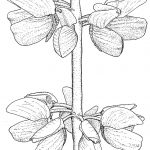When Natives Aren’t Nice
Native plants can act like invaders
Most gardeners would like to do a little less routine yard maintenance and spend more time being creative, or even relaxing. But the low maintenance … Continue reading
We've got issues.
Most gardeners would like to do a little less routine yard maintenance and spend more time being creative, or even relaxing. But the low maintenance … Continue reading

The solar eclipse in August was a rare and spectacular event, predicted with the same accuracy as the timing of the equinox this month (1:02 … Continue reading

August is a month of tension between the urge to backpack into the high Cascades and the density of mosquitoes near the best campsites around … Continue reading

For the first time in several years our reservoirs are full. This is good news all around because it means that there has been a … Continue reading

The frenetic flowering rush of spring is tapering off as nature settles into the languorous days surrounding the summer solstice. The sun rises early, before … Continue reading
It looks like the school garden concept is getting some serious respect from the 4J school district. Just look at the spanking new Howard Elementary … Continue reading

I once told my ex-fiancé that I was a vegetarian because I ate only what I could personally kill. He promptly bought me a shotgun … Continue reading

Artesia Hubbard, a University of Oregon student from Colorado, has always been a steward of the land. “I was a river baby. I was always … Continue reading

If you’ve never battled your way through wet Oregon undergrowth for hours and hours, hoping to collect two to four ounces of mushrooms to take … Continue reading

I’m in a church parking lot just north of 13th Avenue in Eugene, staring at my phone, circling around the lot, looking at a little … Continue reading